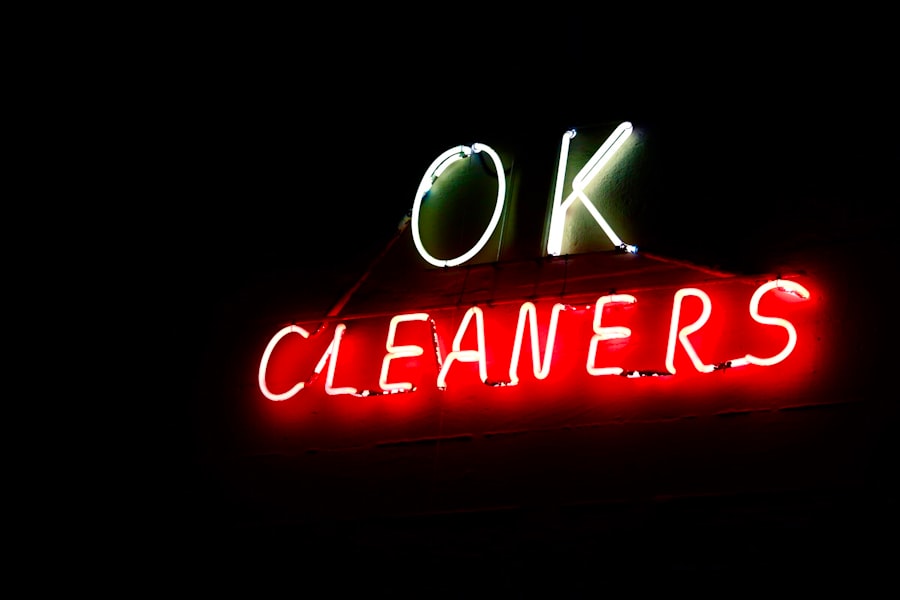
- By: admin
- Category: Commercial Floor Cleaning Machines
- 0 comment
In the realm of commercial and industrial cleaning, floor scrubbers are indispensable tools that ensure cleanliness and hygiene in various environments, from warehouses to shopping centres. However, like any piece of machinery, these machines can encounter issues that hinder their performance. Understanding how to troubleshoot common problems not only saves time but also extends the lifespan of the equipment, ultimately leading to cost savings for businesses.
This article aims to provide a comprehensive guide on troubleshooting floor scrubbers, equipping contract cleaners, building managers, and facility managers with the knowledge needed to address issues effectively. When a floor scrubber malfunctions, it can disrupt cleaning schedules and impact overall productivity. Therefore, being able to identify and rectify these issues promptly is crucial.
This guide will walk you through the essential steps of troubleshooting, from checking power supplies to examining the vacuum system. By following these guidelines, you can ensure that your scrubber operates at peak efficiency, maintaining the high standards expected in commercial cleaning environments. Please feel free to get in touch with us through our Contact Us page.
Summary
- Proper maintenance and troubleshooting of scrubbers is essential for efficient cleaning operations.
- Check power supply and connections to ensure the scrubber is receiving adequate power.
- Regularly inspect the battery and charger for any signs of damage or malfunction.
- Examine the control panel and settings to ensure they are properly configured for the cleaning task.
- Assess the condition of the brushes and squeegees for any wear and tear that may affect cleaning performance.
- Regularly investigate the water and solution tanks for any leaks or blockages that may affect the cleaning process.
- Troubleshoot the vacuum and suction system to ensure proper functioning for effective cleaning.
- Contact a professional for further assistance if troubleshooting efforts do not resolve the issues.
Checking Power Supply and Connections
The first step in troubleshooting a floor scrubber is to check the power supply and connections. A common issue that can lead to operational failure is an inadequate power source. Begin by ensuring that the machine is plugged into a functioning outlet.
It may seem straightforward, but power outages or tripped circuit breakers can often be overlooked. If the scrubber is battery-operated, verify that the battery is charged and properly connected. A loose connection can prevent the machine from receiving power, rendering it inoperable.
In addition to checking the outlet and connections, inspect the power cord for any signs of damage. Frayed wires or exposed insulation can pose safety hazards and lead to further electrical issues. If you discover any damage, it is advisable to replace the cord or consult a professional for repairs.
By ensuring a reliable power supply, you lay the groundwork for effective troubleshooting and can move on to more complex issues with confidence.
Inspecting the Battery and Charger

For battery-operated scrubbers, inspecting the battery and charger is a critical next step in troubleshooting. Begin by examining the battery terminals for corrosion or dirt, which can impede electrical flow. Clean any debris gently with a soft cloth or brush to ensure a good connection.
Additionally, check the battery’s charge level; if it appears low, connect it to the charger and allow it to charge fully before attempting to operate the machine again. It’s also essential to assess the charger itself. A malfunctioning charger can lead to inadequate battery performance, so ensure that it is functioning correctly.
If possible, test the charger with another compatible battery to determine if it is working as intended. If both the battery and charger seem operational yet issues persist, it may be time to consider replacing the battery altogether. A well-maintained battery not only enhances performance but also contributes to the longevity of your scrubber.
Examining the Control Panel and Settings
The control panel of a floor scrubber serves as the command centre for its operations, making it vital to examine this component during troubleshooting. Start by ensuring that all settings are correctly configured for the task at hand. Sometimes, an incorrect setting can lead to perceived malfunctions; for instance, if the scrubber is set to a low speed or insufficient water flow, it may not perform effectively.
Additionally, look for any warning lights or error messages displayed on the control panel. These indicators can provide valuable insights into what might be wrong with the machine. Refer to the manufacturer’s manual for guidance on interpreting these signals and follow any recommended troubleshooting steps.
If you find that the control panel is unresponsive or malfunctioning, it may require professional attention to diagnose and repair electronic issues.
Assessing the Brushes and Squeegees
The brushes and squeegees are critical components of a floor scrubber that directly impact its cleaning efficiency. Over time, these parts can wear down or become clogged with debris, leading to subpar performance. Begin your assessment by inspecting the brushes for signs of wear or damage.
If they appear frayed or worn down, replacing them will likely restore optimal cleaning capabilities. Similarly, examine the squeegees for any obstructions or damage. A malfunctioning squeegee can result in poor water recovery, leaving floors wet and potentially hazardous.
Ensure that both brushes and squeegees are properly aligned and securely attached to the machine. Regular maintenance of these components not only enhances cleaning effectiveness but also prevents further complications down the line.
Investigating the Water and Solution Tanks

Another crucial aspect of troubleshooting a floor scrubber involves investigating the water and solution tanks. Begin by checking for any blockages in the hoses or filters that could impede water flow. Clogs can occur due to debris accumulation or improper use of cleaning solutions, leading to inefficient scrubbing and rinsing processes.
Next, inspect both tanks for leaks or damage. A compromised tank can lead to loss of cleaning solution or water, affecting overall performance. If you notice any leaks, it may be necessary to replace seals or gaskets to restore functionality.
Additionally, ensure that you are using the correct cleaning solution as specified by the manufacturer; using inappropriate chemicals can lead to tank damage or ineffective cleaning results.
Troubleshooting the Vacuum and Suction System
The vacuum and suction system plays a pivotal role in ensuring that floors are left clean and dry after scrubbing. If you notice that your scrubber is leaving behind excess water or debris, it’s time to investigate this system closely. Start by checking for blockages in the vacuum hose or filters; even minor obstructions can significantly reduce suction power.
Furthermore, inspect the vacuum motor for any unusual sounds or signs of wear. A malfunctioning motor may require professional servicing or replacement. Ensure that all connections within the suction system are secure; loose fittings can lead to air leaks that diminish suction efficiency.
By addressing these issues promptly, you can maintain optimal performance and ensure that your floors are left spotless after each cleaning session.
Contacting a Professional for Further Assistance
While many troubleshooting steps can be performed in-house, there are instances where professional assistance is necessary. If you have followed all previous steps and your floor scrubber remains unresponsive or continues to exhibit problems, it may be time to consult a qualified technician. Professionals possess specialised knowledge and tools that can diagnose complex issues that may not be immediately apparent.
Before contacting a technician, gather all relevant information about your scrubber’s model and any symptoms it has exhibited during operation. This information will help expedite the diagnostic process and ensure that you receive appropriate assistance quickly. Investing in professional maintenance not only resolves current issues but also helps prevent future problems, ensuring your equipment remains in top condition for years to come.
In conclusion, troubleshooting a floor scrubber involves a systematic approach that begins with checking power supplies and progresses through various components of the machine. By understanding how each part functions and what common issues may arise, contract cleaners, building managers, and facility managers can effectively maintain their equipment and ensure optimal performance. Regular maintenance and prompt troubleshooting not only enhance cleaning efficiency but also contribute to a safer working environment.
FAQs 1. What should I do if my floor scrubber won’t turn on?
– Start by checking the power supply and connections; ensure it’s plugged in or that the battery is charged. 2.
How often should I inspect my scrubber’s brushes and squeegees?
– Regular inspections should be conducted weekly or after heavy use to ensure optimal performance. 3. What type of cleaning solution should I use in my floor scrubber?
– Always refer to your manufacturer’s guidelines for recommended cleaning solutions specific to your model.
4. When should I contact a professional technician?
– If you’ve exhausted all troubleshooting steps without success or if you notice unusual sounds from the machine. 5.
Can I perform maintenance on my floor scrubber myself?
– Yes, many maintenance tasks can be performed in-house; however, complex repairs should be left to professionals for safety reasons.
FAQs
What are some common reasons why a scrubber won’t start?
Some common reasons why a scrubber won’t start include power issues, clogged or dirty components, malfunctioning switches or controls, and low battery levels.
How can I troubleshoot power issues with my scrubber?
To troubleshoot power issues with your scrubber, check the power cord for any damage or loose connections, ensure that the power outlet is working, and inspect the fuse or circuit breaker for any issues.
What should I do if my scrubber’s components are clogged or dirty?
If your scrubber’s components are clogged or dirty, you should clean or unclog the affected parts, such as the brushes, squeegees, or solution tanks, according to the manufacturer’s instructions.
How can I troubleshoot malfunctioning switches or controls on my scrubber?
To troubleshoot malfunctioning switches or controls on your scrubber, check for any visible damage or debris, ensure that the connections are secure, and consider resetting the machine according to the manufacturer’s guidelines.
What should I do if my scrubber’s battery levels are low?
If your scrubber’s battery levels are low, you should recharge the battery according to the manufacturer’s recommendations, and consider inspecting the battery for any signs of damage or wear.
